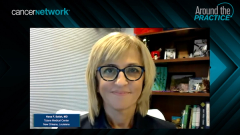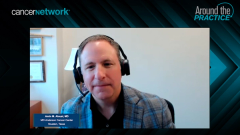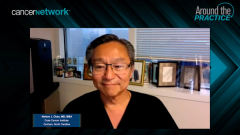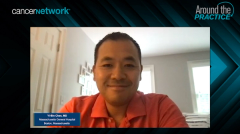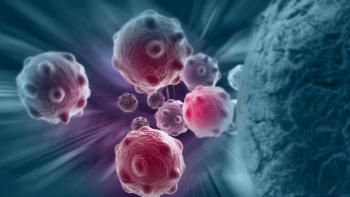
Selecting Therapy for Patients With a Partial Response to Frontline Therapy
Shared insight on treatment approaches toward patients with acute graft vs host disease who experience partial response to frontline therapy.
Episodes in this series

Transcript:
Yi-Bin Chen, MD: Let’s throw a third twist into this case. Let’s say the patient had developed a severe lower GI [gastrointestinal] disease. They responded with steroids, and at day 28, which has become our consensus end point for these acute GVHD [graft-vs-host disease] trials, they had a partial response. They didn’t have a complete response [CR], but they had a partial response. They were down to less than a liter of diarrhea. They felt a little better, but they’re still on a large dose of steroids. What happens then? If they don’t get better from that partial response, what do you do?
Amin M. Alousi, MD: It’s really interesting. When we look at the day 28 response data, patients who were classified as having a partial response [PR] did similar to those who had a complete response. But that’s not the full story. The full story is that for patients who had a partial response to skin GVHD—not lower GI GVHD—in the databases that were used to establish the day 28 response criteria, very few patients who were in a PR had lower GI involvement. The reason is because very few clinicians wait 28 days for somebody’s diarrhea to get better before they start second-line therapy. Once you start second-line therapy, that’s progressive disease or treatment failure. The population who had a PR on day 28, who did similar to those who were CR, were limited to some upper GI patients and skin GVHD but not those with diarrhea. If a patient is still having diarrhea for an extended period of time—more than 14 days—and the patient is still has some degree of diarrhea, even if it’s better than where they started, it’s pretty uniform that that patient would get a second-line therapy. That’s the best practice. Off a clinical trial, ruxolitinib [Opzelura] is the only FDA-approved therapy in that setting. Consideration for clinical trial is always appropriate when available because we can always do better.
Yi-Bin Chen, MD: Just highlighting here. We’ll all have a shorter trigger to move on. We’d have no hesitation about moving on to a second-line agent for a steroid-refractory disease that’s been defined. But even for patients who achieve a response, that response is either A) just not good enough for the patient, or B) dependent on a high dose of steroids. We’d move on to another agent. This would not only improve the response but spare the patient of high-dose steroids. At this point, most of our center at Massachusetts General Hospital is off a clinical trial. Our efforts are focused on ruxolitinib. If we all look closely at the trials that validated ruxolitinib as a standard of care for severe-refractory GVHD, while ruxolitinib is a giant step forward in our field, the complete response rate to ruxolitinib is only about 25% for severe refractory cases. It highlights how much room there is for improvement. I agree with my colleagues that involvement on clinical trials is the only way to figure out improvement and to make progress.
Transcript edited for clarity.
Newsletter
Stay up to date on recent advances in the multidisciplinary approach to cancer.


